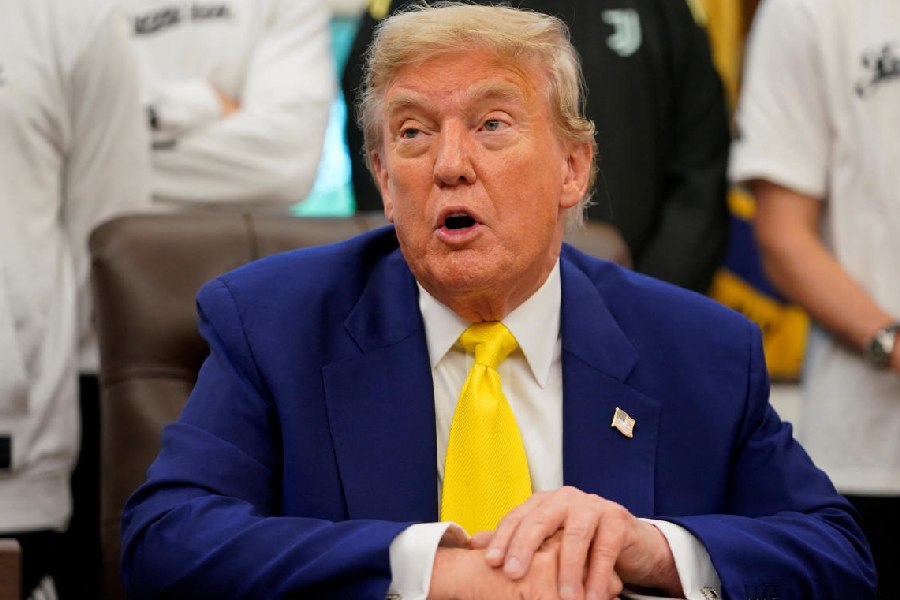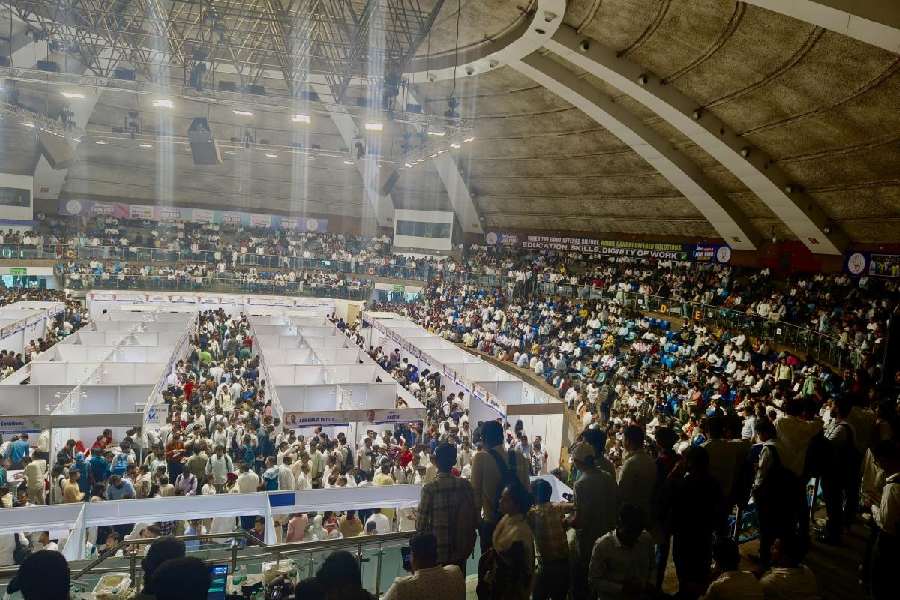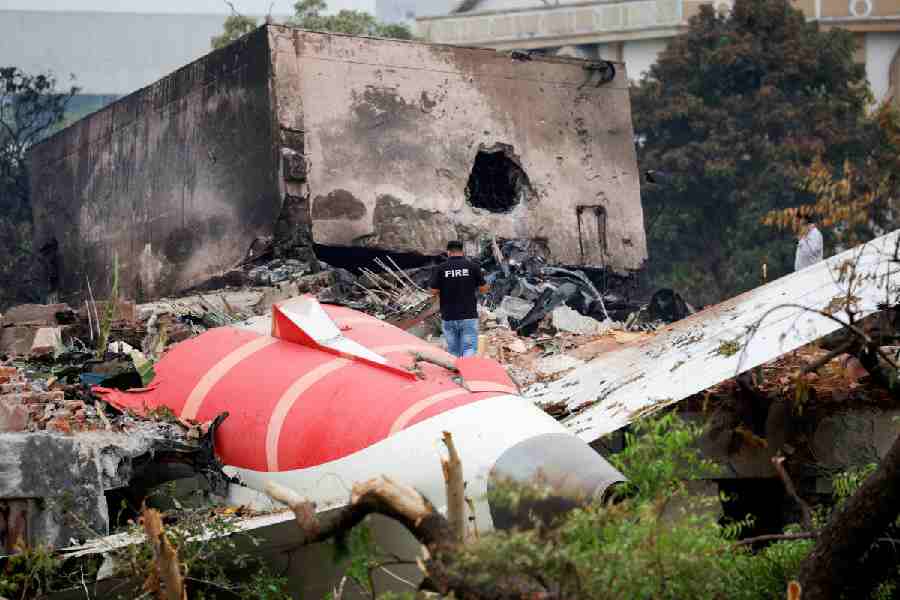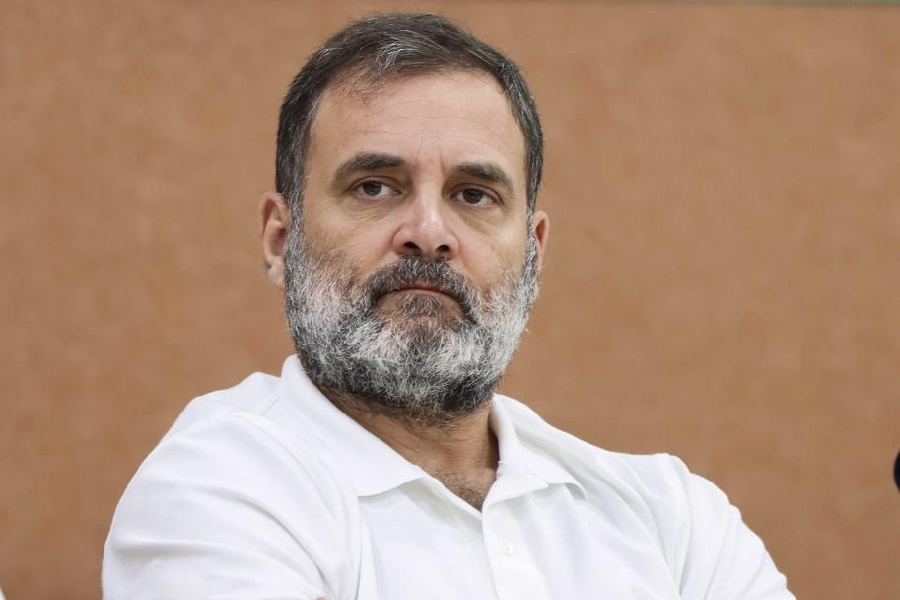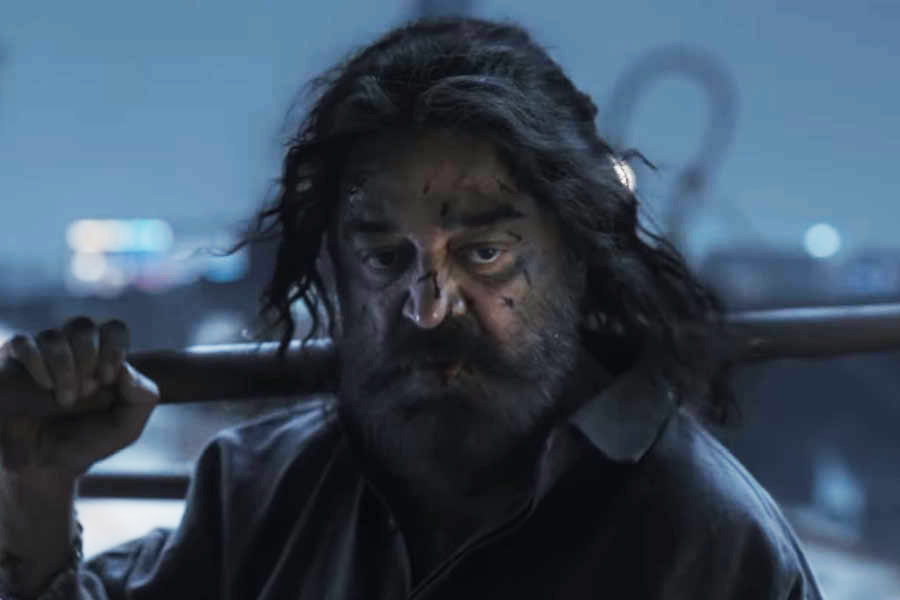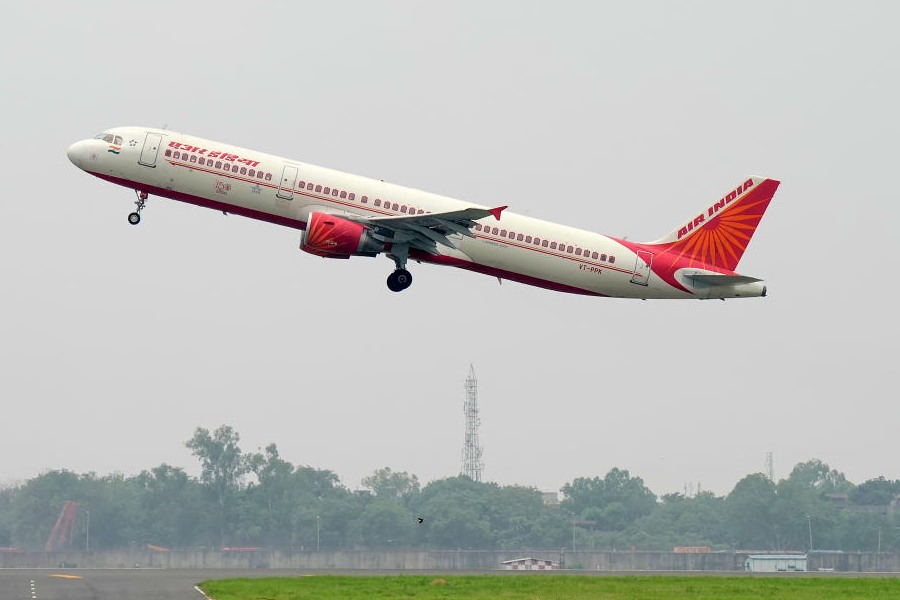
The rush of decibels and moving images - not to speak of an electrically devised kinetic object - that greeted the viewer at Birla Academy's show of multi-media art re-affirms that new-age artists have much to say. And there are many more means available now than earlier in which to say them. But whether technology is accessed more for a quick response of 'Wow!' rather than from an inner urge is something to reflect on. And the artists did, indeed, have things to say, all of them dutifully recorded in statements.
Contrast that with Sanskriti Gallery's 25th anniversary show which felt like a time warp with neither sound, nor movement, nor even artists' statements which were left to the works to make; the works of five artists from an earlier generation in Bengal, none now around.
Having said that, it's only fair to acknowledge how stimulating it is to see young artists get worked up about ambushing the viewer with sly seductions, gentle nudges or outright assault. But the first artist according to the wall arrangement, Debnath Basu, abjured sound and movement, preferring to suggest both through a simple strategy: a chaotic scrawl of adhesive lines on which sooty graphite powder was sprinkled to throw up, what he described as, the 'backstreet bedlam' of his home town, Howrah. Underneath, almost invisible, were references to a subaltern creative expression now extinct: kabigaan. His other works - a series titled Visual Petition - attempted to interpret the mystifying Wonderland of the legal establishment in the only sane way possible: as nonsensical farce.
Meanwhile, the furious pulse of the big city got more maddening, raucous, vertiginous in Rajib Bhattacharjee's canvas. As though it were a frozen moment in a tectonic upheaval. On the other hand, his video, Space in Transition, unfroze the moment to release a flow of multiple images superimposed, fading, merging, spilling forth from a churning concrete mixer. That's how the works approximated the explosive, gut-turning instability that runs through urban narratives.
But Chhatrapati Dutta's video, Surviving Alphabets, had a much larger perspective as it took up a fascinating subject: how history evolves through the clash and absorption/evaporation of cultures with their elusive patterns of dominant and recessive elements. A clock going backwards and glyphs and letters of different scripts were obvious motifs but there was little either startling or telling in the staccato frames. However, another work, a print, amused with its mocking bravado.
The moving image gave way to the moving object in Debasish Barui's Flood Water of India. His agitation over political rhetoric that tries to 'wring' natural disasters -like floods - for electoral profit found a simple correlative: a tiny hammock of cords cleverly wired to twist in opposite directions - so that it soaked in the water below and then wrung it out.
While Adip Dutta was content to refine his craft with a quiet brush, Sambaran Das forgot that excess blunts the edge of imagery, particularly in posters. Tushar Kanti Pradhan's installation was so elaborate that the frightening Nightmare of contemporary reality was quite lost in the visual logorrhea. Two other artists, Sourav Roy Chowdhury and Suman Samajpati, who call themselves Taxi, painted photographs with unlikely garish colours to trap the surreal in the real. Akhil Das must shake off the spell of Chintan Upadhyay's bizarre babies. And Bhabotosh Sutar's giant rooster would have been as impressive without the overload of a mobike and a small video screen. Obviously, knowing when enough is enough remains an elusive lesson.
The five from an earlier era seemed to confirm that laurel leaves sometimes become comfortable seats for big names. Bikash Bhattacharjee, for example, turned out those pastel/conti women with highlighted cheekbones or shoulder blades because the market couldn't resist them. Three such drawings were at Sanskriti along with two watercolours. Dharmanarayan Dasgupta, who'd perceptively mined and mixed mainstream and marginal traditions, often allowed the sucrose to drown out the satiric as his hybrid figuration and fluorescent colours slipped into a habit. But one work stood out for the sly smugness on the face of the babu.
From the third of the dominant triumvirate, Ganesh Pyne, came two works. The tongue-in-cheek humour of the tempera brought out his lighter side, though it was the tight anxiety of the ink drawing that stole the show (picture). Paritosh Sen's cartoonish depiction hinted at violence in three paintings, while another portrayed Salman Khan as a cool Killer. Of deer. And Shyamal Dutta Ray's signature - begging bowl, rickety structures and nervy splotches of dark, overlapping colours - was clearly asserted in his works.





